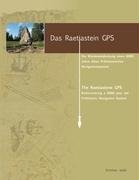<< Sites under Threat >> Windfarm threat to Callanish Sleeping Beauty
Submitted by Andy B on Thursday, 18 February 2010 Page Views: 28085
Site WatchCountry: Scotland County: Isle of Lewis Type: Stone CircleInternal Links:
At the major southern standstill of the moon (every 18.6 years - next one due in 2006) the moon appears to rise out of Her legs, creep low along her body, silhouetting first one part and then another, hang low over her breasts, and then disappear behind a hillock, only to reappear inside the circle of stones at the foot of the tallest central one and at the head of the burial cairn. This spectacular sight is pure megalithic magic: a perfect blending of astronomy, ritual, landscape and Goddess.
Now the mountain is under threat - from a proposed wind farm, which if it goes ahead will permanently disfigure the 'Goddess' shape of the hills. An application has been made to the Scottish Ministers by Beinn Mhor Power Ltd of 39 Castle Street, Edinburgh, Scotland EH2 3BH to construct a 133 turbine windfarm on the top of the peaks that constitute the 'Sleeping Beauty'. Irrespective of the value of windfarms as renewable energy, the proposed location for these wind turbines will directly affect the appearance of the Sleeping Beauty mountain and the sight of the standstill of the moon.
Objections to the siting of the turbines can be made to the Scottish Executive - but action must be taken immediately. We have only until 13th January to object. If you feel strongly about this please e-mail your objections and representations to paul.smith@scotland.gsi.gov.uk (the Consents & Emergency Planning Unit of the Scottish Executive in Glasgow) stating that you are objecting to the specific location of the wind turbines, and the adverse effect this may have on the appearance of the hills and the local economy of Lewis, which attracts thousands of visitors to Callanish and to view the Standstill.
Many thanks
Cheryl
With thanks to Northern Earth for the alert
Note: Ministers Approve Wind Farm, see latest comment.






 We would like to know more about this location. Please feel free to add a brief description and any relevant information in your own language.
We would like to know more about this location. Please feel free to add a brief description and any relevant information in your own language. Wir möchten mehr über diese Stätte erfahren. Bitte zögern Sie nicht, eine kurze Beschreibung und relevante Informationen in Deutsch hinzuzufügen.
Wir möchten mehr über diese Stätte erfahren. Bitte zögern Sie nicht, eine kurze Beschreibung und relevante Informationen in Deutsch hinzuzufügen. Nous aimerions en savoir encore un peu sur les lieux. S'il vous plaît n'hesitez pas à ajouter une courte description et tous les renseignements pertinents dans votre propre langue.
Nous aimerions en savoir encore un peu sur les lieux. S'il vous plaît n'hesitez pas à ajouter une courte description et tous les renseignements pertinents dans votre propre langue. Quisieramos informarnos un poco más de las lugares. No dude en añadir una breve descripción y otros datos relevantes en su propio idioma.
Quisieramos informarnos un poco más de las lugares. No dude en añadir una breve descripción y otros datos relevantes en su propio idioma.